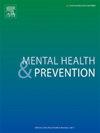Influences of life education intervention on psychiatric symptoms and depression in young adolescents
IF 2.4
Q2 Medicine
引用次数: 0
Abstract
Background
Adolescence is a critical period characterized by significant physical, psychological, and social changes. The challenges associated with developing a sense of self-identity and navigating societal roles can lead to psychological distress. This study seeks to investigate the effectiveness of life education intervention in addressing these psychological problems among adolescents.
Methods
The present study was conducted by students from 16 classes in a senior high school. The participants completed a baseline assessment (N = 887), and eight of the classes (N = 455) were allocated to control and observation groups. The life education course intervention program is based on educational psychology and consists of three sessions, delivered on a 1-week interval period. They finally completed a follow-up survey and main outcome measures were changes in the scores of the Self-Rating Depression Scale (SDS), and Self-Report Symptom Inventory (SCL-90).
Results
After the intervention, the somatization, obsessive-compulsive, interpersonal sensitivity, hostility, depression, anxiety, paranoid ideation, phobic anxiety, psychoticism, and sleeping and dietary status in the observation group were reduced compared with those before the intervention. Compared to the pre-intervention, the total scores of SDS and SCL in the observation group decreased better after the intervention, and the above scores declined obviously to a greater extent than those in the control group (P < 0.05).
Conclusion
Integrating life education into the school significantly contributes to positive outcomes in adolescent psychological health, suggesting that short-term interventions of life education could be proposed as a beneficial practice to cope with various psychological distress faced by adolescents.
生活教育干预对青少年精神症状和抑郁的影响
青春期是身体、心理和社会发生重大变化的关键时期。与发展自我认同感和定位社会角色相关的挑战可能导致心理困扰。本研究旨在探讨生命教育干预在解决青少年这些心理问题中的有效性。方法对某高中16个班的学生进行问卷调查。参与者完成了基线评估(N = 887),其中8个班级(N = 455)被分配到对照组和观察组。生命教育课程干预计划以教育心理学为基础,分为三个阶段,每隔一周进行一次。他们最终完成了随访调查,主要结果测量是抑郁自评量表(SDS)和自我报告症状量表(SCL-90)得分的变化。结果干预后,观察组患者躯体化、强迫症、人际敏感、敌意、抑郁、焦虑、偏执、恐惧焦虑、精神病、睡眠和饮食状况均较干预前有所降低。与干预前相比,干预后观察组SDS和SCL总分下降较好,且上述评分下降幅度明显大于对照组(P <;0.05)。结论生命教育融入学校对青少年心理健康有显著的积极作用,提示生命教育的短期干预可以作为应对青少年各种心理困扰的有益实践。
本文章由计算机程序翻译,如有差异,请以英文原文为准。
求助全文
约1分钟内获得全文
求助全文
来源期刊

Mental Health and Prevention
Medicine-Psychiatry and Mental Health
CiteScore
2.10
自引率
0.00%
发文量
22
审稿时长
24 days
 求助内容:
求助内容: 应助结果提醒方式:
应助结果提醒方式:


